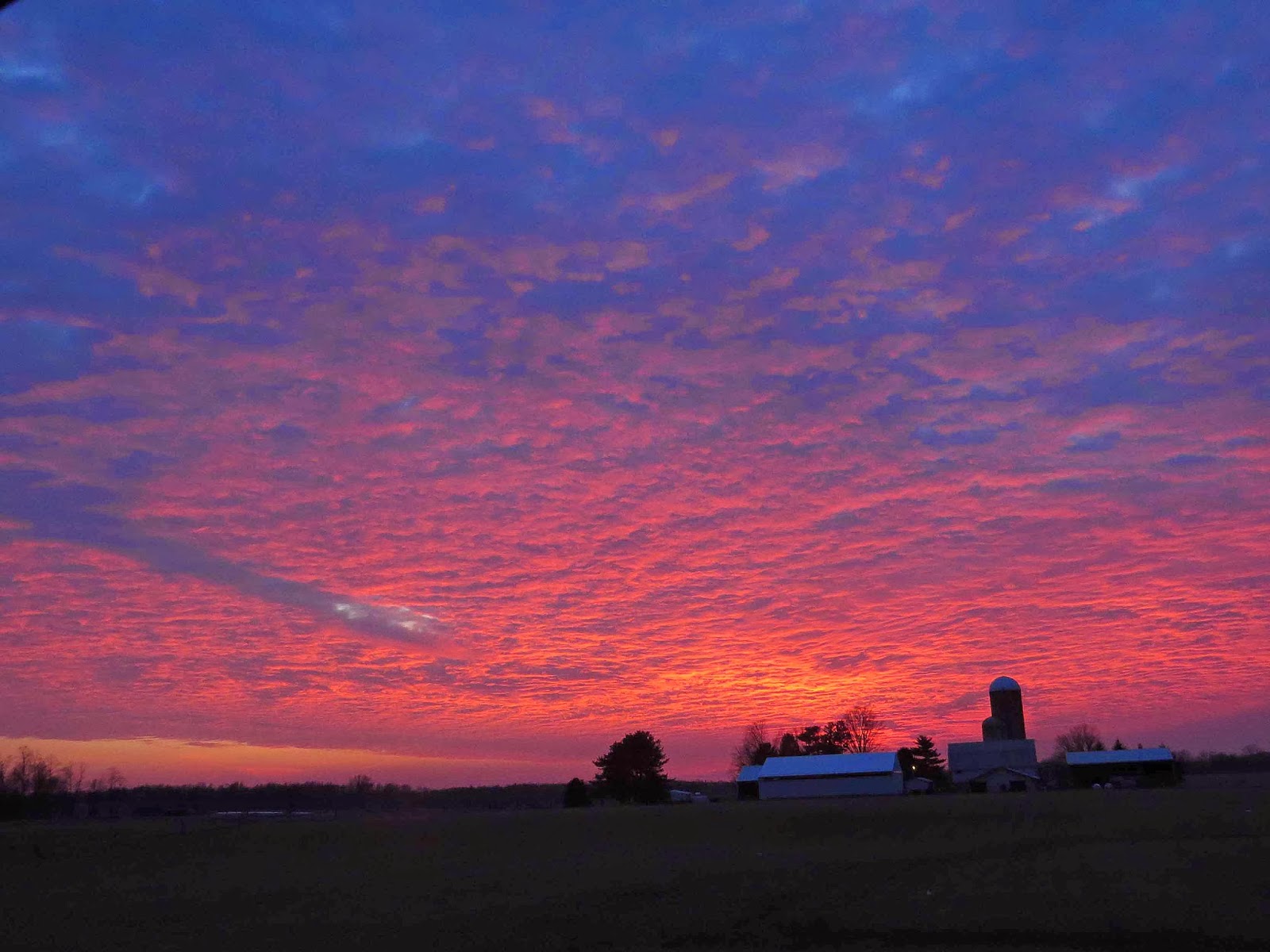For the past few days we had been reading very enticing reports about large numbers of ducks and gulls in the city, including some rare ones, so this weekend we headed north to see what all the excitement was about.
Here is what we saw as we approached the river--at this point things didn't look all that promising:
But soon we started to see lots of gulls and ducks, with Quicken Loans Arena (LeBron James' former workplace) in the background:
And then the full impact of the huge flock was quite evident:
One of the main attractions was a bird called the pomarine jaeger which had been seen in this area for the past few days. True to its name, which means "hunter" in German, this bird is a fierce predator. It will eat just about any animal, which it obtains by hunting, scavenging, and stealing from other birds. We were extremely fortunate--as we got out of our car people were pointing at the bird. We got great looks at it as it circled close by and even landed not far away. Then off it flew north along the river and as far as we know it wasn't seen the rest of the morning. (For a photo of the jaeger taken at the same time we were there head over to Weedpicker's Journal.) Then our attention turned to the hundreds of other birds present along the river.
As we were wondering how on earth we would distinguish some of the rarer gulls we were relieved to see some other birding friends and acquaintances, who were very helpful with gull ID. This area along the river (known as Scranton Flats) is in the process of being developed into a small park, and we really appreciated the new and conveniently located observation platform:
We were excited to see this Iceland gull which was a new bird for us:
There are usually a few of these in the winter along the lake, but this year there have been more than usual. These birds breed far to the north.
Most gulls that we see in Ohio are either ring-billed or herring gulls, so just about anything else is exciting to see. Here is a great black-backed gull:
In addition to large numbers of unusual gulls, the past few days have brought an unprecedented number of red-necked grebes to the state. Here is one that we saw on the Cuyahoga River:
From this spot we headed east to another lakeside area that has a bit of open water, thanks to an adjacent power plant. Here at Eastlake we saw several white-winged scoters, which are typically sea ducks (the upper one in the photo; the lower one is a female common merganser):
Eastlake had another special bird, a glaucous gull. This is another gull that breeds far to the north. In the photo below it is the one in back with completely white tail feathers and wing tips:
Here it is expressing its opinion to the other gulls:
At both these locations large numbers of a wide variety of ducks were present. Here are photos of several of them:
This is probably the most unusual of the ducks that we saw on this trip--the long-tailed duck:
After enjoying great views of the birds at these urban locations we switched gears completely and drove south and east through lovely Amish farmland to look for the long-eared owl that has been spotted near Mosquito Lake State Park. At one farm we noted a grove of maples being tapped for syrup using buckets instead of the plastic tubing that is often used:
We found the long-eared owl (with help from expert birders) and were able to photograph it with a telephoto lens but unfortunately the view wasn't great. It is interesting to note, though, that this bird was employing some good camouflage techniques, finding a place that is its same color and staying perfectly still.
This year has been quite notable for the presence of snowy owls all over the state and, in fact, all over the eastern U.S. At least one has turned up in Florida this winter! Despite being out a lot, we hadn't seen one this year so we made an effort to check for one that had been reported from a farm in Geauga County. These incredible owls come from way north on the tundra, so they are usually seen on the ground or on a low fencepost, or on a higher perch overlooking an open area where they can hunt for rodents. At first we couldn't find the bird at the location that had been reported, but then we went around the corner to get a view from another angle and we weren't disappointed! We got a good clear view, albeit from a distance:
What an exciting day of winter birding! It was great to see these visitors from the far north, and it was especially nice to see several very helpful Ohio birders. We were also impressed by the efforts underway in Cleveland to improve the waterfront with parks and pedestrian access. To top it all off, we were treated to a spectacular sunset on the drive back to Columbus:
















Wow, Deb! I've got to go birding with you sometime. What great birds! Thanks for the tip on the Rio Grande book, it was really helpful
ReplyDeleteThanks for your note! So glad you enjoyed the book! I've really enjoyed looking at the pictures of your trip--you certainly have covered a lot of interesting territory!
ReplyDelete